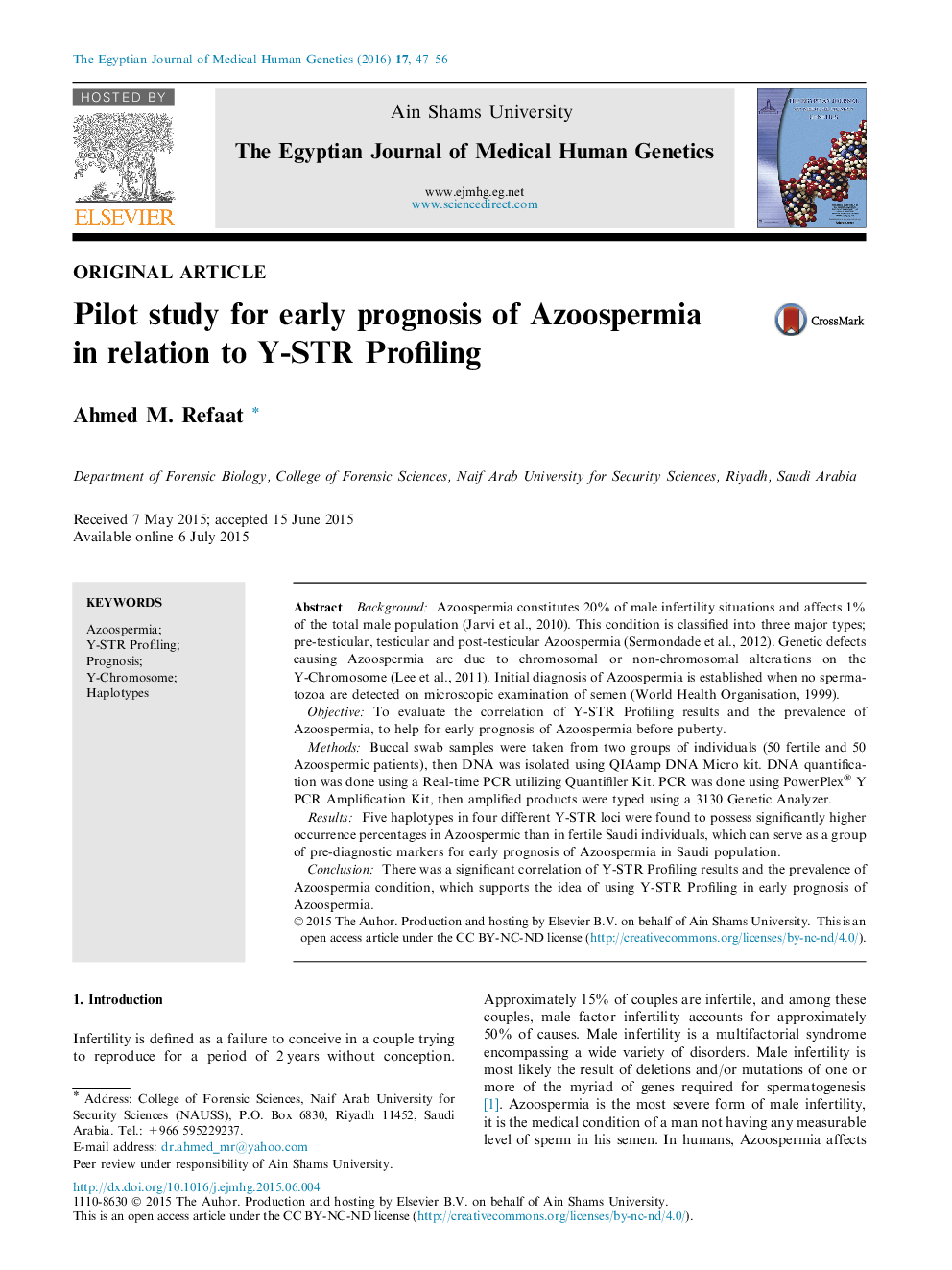| کد مقاله | کد نشریه | سال انتشار | مقاله انگلیسی | نسخه تمام متن |
|---|---|---|---|---|
| 2177962 | 1549621 | 2016 | 10 صفحه PDF | دانلود رایگان |

BackgroundAzoospermia constitutes 20% of male infertility situations and affects 1% of the total male population (Jarvi et al., 2010). This condition is classified into three major types; pre-testicular, testicular and post-testicular Azoospermia (Sermondade et al., 2012). Genetic defects causing Azoospermia are due to chromosomal or non-chromosomal alterations on the Y-Chromosome (Lee et al., 2011). Initial diagnosis of Azoospermia is established when no spermatozoa are detected on microscopic examination of semen (World Health Organisation, 1999).ObjectiveTo evaluate the correlation of Y-STR Profiling results and the prevalence of Azoospermia, to help for early prognosis of Azoospermia before puberty.MethodsBuccal swab samples were taken from two groups of individuals (50 fertile and 50 Azoospermic patients), then DNA was isolated using QIAamp DNA Micro kit. DNA quantification was done using a Real-time PCR utilizing Quantifiler Kit. PCR was done using PowerPlex® Y PCR Amplification Kit, then amplified products were typed using a 3130 Genetic Analyzer.ResultsFive haplotypes in four different Y-STR loci were found to possess significantly higher occurrence percentages in Azoospermic than in fertile Saudi individuals, which can serve as a group of pre-diagnostic markers for early prognosis of Azoospermia in Saudi population.ConclusionThere was a significant correlation of Y-STR Profiling results and the prevalence of Azoospermia condition, which supports the idea of using Y-STR Profiling in early prognosis of Azoospermia.
Journal: Egyptian Journal of Medical Human Genetics - Volume 17, Issue 1, January 2016, Pages 47–56